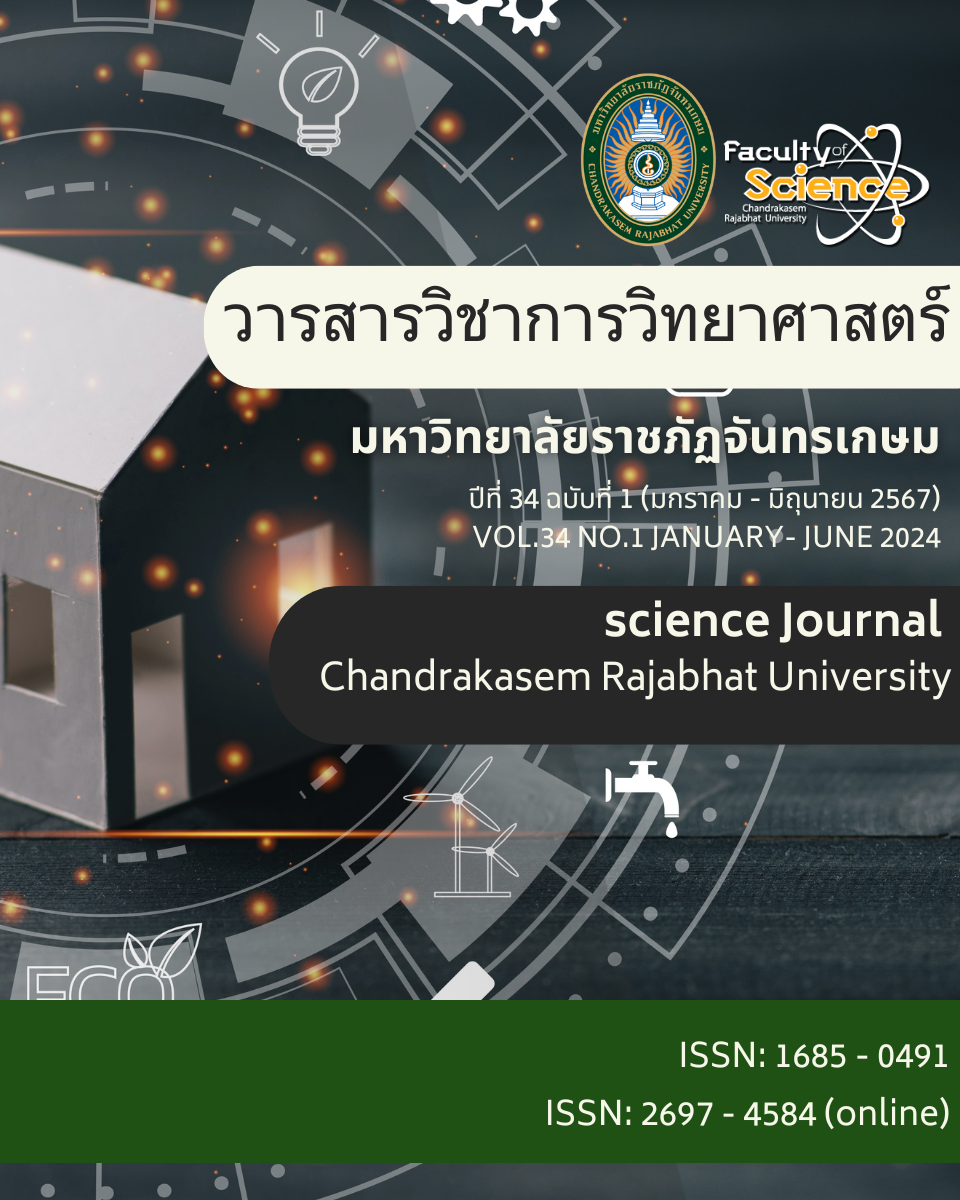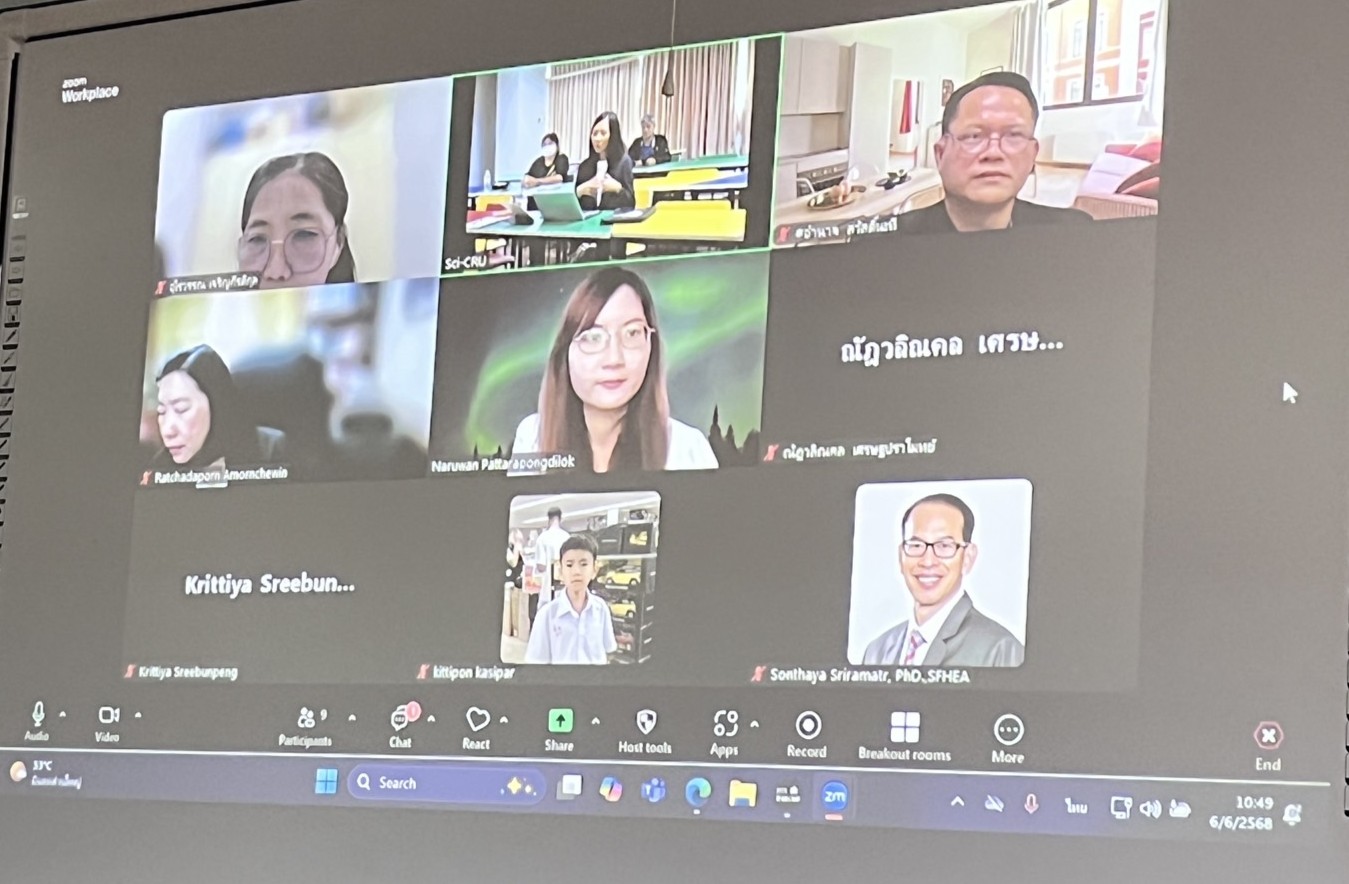ตัวแบบการใช้โครงข่ายประสาทเทียมแบบสังวัตนาการเพื่อตรวจหารอยร้าวคอนกรีต
คำสำคัญ:
การเรียนรู้ของเครื่อง, การตรวจหารอยร้าวคอนกรีต, โครงข่ายประสาทเทียมแบบสังวัตนาการบทคัดย่อ
งานวิจัยงานวิจัยนี้มีวัตถุประสงค์เพื่อพัฒนาตัวแบบการใช้ปัญญาประดิษฐ์ด้วยวิธีโครงข่ายประสาทเทียมแบบสังวัตนาการ (Convolutional Neural Network: CNN) เพื่อตรวจหารอยร้าวคอนกรีตแบบอัตโนมัติของงานสิ่งก่อสร้าง ช่วยลดความจำเป็นในการตรวจสอบด้วยตนเอง ชุดข้อมูลที่หลากหลายซึ่งประกอบด้วยสถานการณ์การแตกร้าวที่เป็นรูปธรรมต่างๆ ถูกนำมาใช้เพื่อฝึกฝนและทดสอบให้มั่นใจถึงความแข็งแกร่งในการตรวจจับการแตกร้าวในบริบทต่างๆ นอกจากการปรับปรุงความแม่นยำและความสม่ำเสมอแล้ว วิธีการที่ใช้การเรียนรู้ของเครื่องนี้ยังช่วยเพิ่มความปลอดภัยด้วยการตรวจสอบพื้นที่ที่ยากต่อการเข้าถึงหรืออันตราย นอกจากนี้ยังเพิ่มความสามารถในการปรับขนาดและประสิทธิภาพโดยอำนวยความสะดวกในการประเมินอย่างรวดเร็วของไซต์ขนาดใหญ่หรือหลายไซต์ วิธีการนี้ช่วยให้สามารถปรับปรุงแก้ไขได้ตั้งแต่เริ่มต้น ซึ่งสามารถป้องกันความวิบัติของโครงสร้างที่อาจเกิดขึ้น ลดค่าใช้จ่ายในการซ่อมแซม และยืดอายุการใช้งานของโครงสร้างคอนกรีตพื้นฐาน ผลลัพธ์แสดงให้เห็นว่าตัวโมเดลมีประสิทธิภาพสูงมาก โดยจำแนกอินสแตนซ์ได้ถูกต้อง 39,482 รายการจาก 40,000 รายการ ส่งผลให้มีความแม่นยำถึง 98.705% นอกจากนี้ มาตรวัดค่าเฉลี่ยถ่วงน้ำหนัก เช่น True Positive Rate, False Positive Rate, Precision, Recall และ F-Measure ได้สะท้อนถึงความแม่นยำระดับสูงนี้ โดยเกณฑ์เกือบทั้งหมดอยู่ที่ 0.987 ซึ่งชี้ให้เห็นว่าโมเดลของ CNN มีประสิทธิภาพสูงมาก ในขณะที่ผลการวิจัยจากการใช้วิธีการแบ่งสัดส่วนข้อมูลที่ 70/30 ก็เป็นไปในทิศทางเดียวกัน โดยแสดงให้เห็นว่าตัวแบบของโมเดลยังคงมีประสิทธิภาพสูงมาก ซึ่งให้ผลการทำนายอินแสตนซ์ที่ถูกต้องจำนวน 11,829 (98.575%) และผิดพลาดแค่ 171 (1.425%) รายการ
เอกสารอ้างอิง
Cement, G. F. P. (12 September 2019). The Importance of Concrete in Construction Projects. GFP Cement Contractors LLC. https://gfpcement.com/the-importance-of-concrete-in-construction-projects/
Ding, W., Yang, H., Yu, K., and Shu, J. (2023). Crack detection and quantification for concrete structures using UAV and transformer. Automation in Construction, 152, 104929. https://doi.org/10.1016/j.autcon.2023.104929
Golding, V. P., Gharineiat, Z., Munawar, H. S., and Ullah, F. (2022). Crack Detection in Concrete Structures Using Deep Learning. Sustainability, 14(13), 8117. https://doi.org/10.3390/su14138117
Imran, H., Al-Abdaly, N. M., Shamsa, M. H., Shatnawi, A., Ibrahim, M., and Ostrowski, K. A. (2022). Development of Prediction Model to Predict the Compressive Strength of Eco-Friendly Concrete Using Multivariate Polynomial Regression Combined with Stepwise Method. Materials, 15(317), 317. https://doi.org/10.3390/ma15010317
Kaggle. (n.d.). Concrete Crack Images for Classification. Kaggle. https://www.kaggle.com/datasets/arnavr10880/concrete-crack-images-for-classification.
Li, Z., Yoon, J., Zhang, R., Rajabipour, F., Iii, W. V. S., Dabo, I., and Radlinska, A. (2022). Machine learning in concrete science: Applications, challenges, and best practices. Npj Computational Materials, 8(1), 1–17. https://doi.org/10.1038/s41524-022-00810-x
Rubio, J. de J., Garcia, D., Rosas, F. J., Hernandez, M. A., Pacheco, J., and Zacarias, A. (2024). Stable convolutional neural network for economy applications. Engineering Applications of Artificial Intelligence, 132, 107998. https://doi.org/10.1016/j.engappai.2024.107998
Sami, B. H. Z., Sami, B. F. Z., Kumar, P., Ahmed, A. N., Amieghemen, G. E., Sherif, M. M., and El-Shafie, A. (2023). Feasibility analysis for predicting the compressive and tensile strength of concrete using machine learning algorithms. Case Studies in Construction Materials, 18, e01893. https://doi.org/10.1016/j.cscm.2023.e01893
Why concrete testing is important in engineering & construction. (2 november 22022). Douglas Partners. https://www.douglaspartners.com.au/news/the-importance-of-concrete-testing.
Witten, I. H., Frank, E., Hall, M. A., and Pal, C. J. (2016). Data Mining: Practical Machine Learning Tools and Techniques. In Data Mining: Practical Machine Learning Tools and Techniques. https://doi.org/10.1016/c2009-0-19715-5.
Yasin, M., Sarıgül, M., and Avci, M. (2024). Logarithmic Learning Differential Convolutional Neural Network. Neural Networks, 172, 106114. https://doi.org/10.1016/j.neunet.2024.106114
Yokoyama, S., and Matsumoto, T. (2017). Development of an Automatic Detector of Cracks in Concrete Using Machine Learning. Procedia Engineering, 171, 1250–1255. https://doi.org/10.1016/j.proeng.2017.01.418
ดาวน์โหลด
เผยแพร่แล้ว
รูปแบบการอ้างอิง
ฉบับ
ประเภทบทความ
สัญญาอนุญาต
ลิขสิทธิ์ (c) 2024 มหาวิทยาลัยราชภัฏจันทรเกษม

อนุญาตภายใต้เงื่อนไข Creative Commons Attribution-NonCommercial-NoDerivatives 4.0 International License.
บทความที่ได้รับการตีพิมพ์เป็นลิขสิทธิ์ของมหาวิทยาลัยราชภัฏจันทรเกษม
ข้อความที่ปรากฎในบทความแต่ละเรื่องในวารสารวิชาการเล่มนี้เป็นความคิดเห็นส่วนตัวของผู้เขียนแต่ละท่าน ไม่เกี่ยวข้องกับมหาวิทยาลัยราชภัฏจันทรเกษม และคณาจารย์ท่านอื่นในมหาวิทยาลัยแต่อย่างใด ความรับผิดชอบองค์ประกอบทั้งหมดของบทความแต่ละเรื่องเป็นของผู้เขียนแต่ละท่าน หากมีความผิดพลาดใดๆ ผู้เขียนแต่ละท่านจะรับผิดชอบบทความของตัวเองแต่เพียงผู้เดียว


 สำหรับผู้แต่ง (Author)
สำหรับผู้แต่ง (Author)





